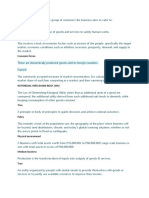0% found this document useful (0 votes)
17 views4 pagesUnit I
The document provides an overview of the financial system, highlighting its meaning, structure, functions, and role in economic development. It outlines the components of the Indian financial system, including financial institutions, markets, instruments, and services, and discusses recent reforms and fiscal policies aimed at boosting the economy. Real-life examples, such as the role of Zomato and Reliance Industries, illustrate the practical applications of these concepts.
Uploaded by
Abhlesh . SCopyright
© © All Rights Reserved
We take content rights seriously. If you suspect this is your content, claim it here.
Available Formats
Download as DOCX, PDF, TXT or read online on Scribd
0% found this document useful (0 votes)
17 views4 pagesUnit I
The document provides an overview of the financial system, highlighting its meaning, structure, functions, and role in economic development. It outlines the components of the Indian financial system, including financial institutions, markets, instruments, and services, and discusses recent reforms and fiscal policies aimed at boosting the economy. Real-life examples, such as the role of Zomato and Reliance Industries, illustrate the practical applications of these concepts.
Uploaded by
Abhlesh . SCopyright
© © All Rights Reserved
We take content rights seriously. If you suspect this is your content, claim it here.
Available Formats
Download as DOCX, PDF, TXT or read online on Scribd
/ 4























































































